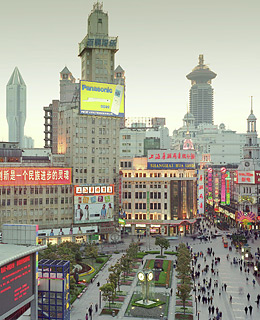
View from the terrace of the Sofitel Hotel on Nanjing Donglu, the main shopping street of Shanghai.
Call it a reaction to years of austerity, but China is the world's third largest consumer of luxury goods, accounting for 12% of global sales, according to a December 2004 Goldman Sachs report. If this trend continues, China could surpass the U.S. to become, along with Japan, the world's largest purchaser of luxury items by 2015. Chinese yuppies are driving the demand, buying everything from expensive watches to imported cars. And luxury purveyors are responding: Armani plans to open 24 stores in China in 2008.
404 Not Found
In this society of sudden economic freedom, newly rich capitalists are eager to clarify their social standing, so they turn to the obvious luxury must-haves: traditional French labels and expensive watches. That explains why Chanel, Lacoste and Dior rank in the top five brands with the highest level of recognition.
Watch Out
22% of affluent consumers in China own a Rolex. 66% of affluent Chinese men have bought at least one watch in the past six months and have paid an average of $2,253 per watch.
Top Five Watch Brands:
1. Rolex
2. Omega
3. Cartier
4. Vacheron Constantin
5. Breitling
Conspicuous Consumption
Chinese consumers who buy luxury goods do so to show off or to help define their identity. The Asian concept of face—or pride and dignity—is a key reason they invest in expensive brands. In a fast-growing economy, status symbols are the easiest way to demonstrate wealth and power.
Most widely owned luxury brands:
1. Lacoste
2. Valentino
3. Chanel / Bally
Top luxury beauty brands:
The three most popular foreign beauty brands in China are Estée Lauder, Lancôme and Guerlain. More than 50% of affluent Chinese consumers own either a Lancôme or an Estée Lauder product.
On average, affluent Chinese consumers will spend up to $280 on a single skin-care product
404 Not Found
Saving face
Skin care is almost three times as popular in China as makeup. Imported foreign products dominate the high end of the market because beauty products tend to cost less than luxury fashion items, so women are willing to splurge on them. Skin-care sales in different regions of China account for 26% to 35% of total cosmetics sales.